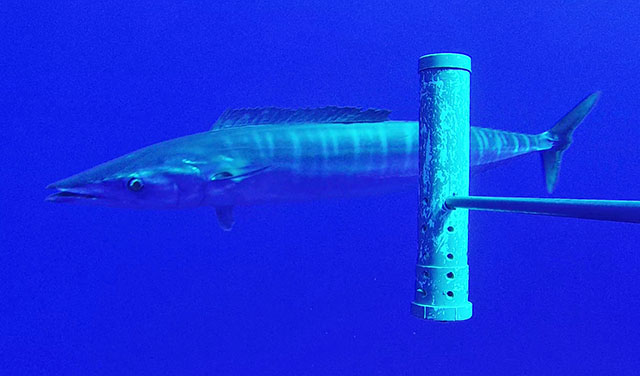| Scombridae (Mackerels, tunas, bonitos), subfamily: Scombrinae |
| 250 cm TL (male/unsexed); max.weight: 83 kg |
|
pelagic-oceanic; marine; depth range 0 - 20 m, oceanodromous |
| Atlantic, Indian and Pacific Oceans: in tropical and subtropical waters, including the Caribbean and Mediterranean seas. |
|
Dorsal spines (total): 23-27; Dorsal soft rays (total): 12-16; Anal spines: 0-0; Anal soft rays: 12-14; Vertebrae: 62-64. Mouth large with strong, triangular, compressed and finely serrate teeth. Snout about as long as the rest of head. Posterior part of maxilla completely concealed under preorbital bone. Gill rakers absent. Interpelvic process small and bifid. Swim bladder present. Body covered with small scales. No anterior corselet developed. The back is iridescent bluish green; the sides silvery with 24 to 30 cobalt blue vertical bars which extend to below the lateral line. |
| An oceanic, epipelagic species frequently solitary or forming small loose aggregations rather than compact schools. Feed on fishes and squids. Eggs and larvae are pelagic (Ref. 6769). An important sport fish in some areas (Ref. 9340). Marketed fresh, salted or spice-cured slices of meat; also frozen (Ref. 9987). Flesh of very good quality (Ref. 9684). Minimum depth from Ref. 005227. |
|
Least Concern (LC); Date assessed: 01 March 2022 Ref. (130435)
|
| reports of ciguatera poisoning |
Source and more info: www.fishbase.org. For personal, classroom, and other internal use only. Not for publication.

